An integrated approach to the treatment of cervical spondylosis is aimed at reduction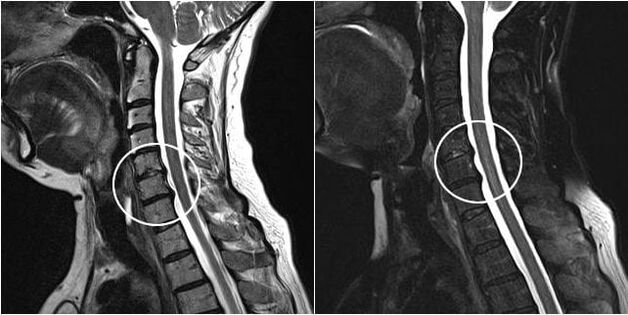 degree of pain and stiffness.This therapy uses drugs from various clinical and pharmacological groups, physiotherapy, classical massage and acupuncture, exercise therapy and acupuncture.If conservative treatments are ineffective, surgery will be performed.
degree of pain and stiffness.This therapy uses drugs from various clinical and pharmacological groups, physiotherapy, classical massage and acupuncture, exercise therapy and acupuncture.If conservative treatments are ineffective, surgery will be performed.
Symptoms of the disease
In the early stages of development, osteochondrosis is asymptomatic.After a long period of bowing or intense physical activity, a slight feeling of discomfort will appear in the back of the neck.Patients do not rush to see a doctor, mistakenly thinking that they are the result of muscle tension.The disease progresses slowly but continuously.
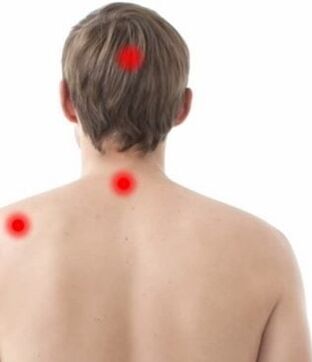
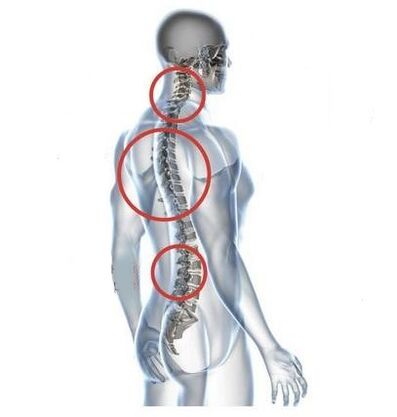
The feeling of discomfort in the neck is gradually replaced by an aching, dull pain in the neck, which intensifies after lifting heavy objects, hypothermia or changes in weather.Other specific symptoms of cervical spondylosis appear:
- crunching or crunching when tilting or turning the head;
- limited mobility in the cervical spine;
- severe, severe pain during an acute attack.
When the intervertebral discs and vertebrae become deformed, the patient's condition becomes worse.The process of cartilage degeneration is complicated by neurological symptoms caused by compression of bone spurs or herniated protrusion of spinal roots and vertebral arteries.Headache, dizziness, blood pressure changes, decreased vision and hearing.
Treatment methods for cervical spondylosis
There is no drug that can restore vertebral structure.But it is entirely possible to improve the patient's health and prevent the spread of the disease.It's not enough to just take pills or apply ointments - you need to do physiotherapy every day, go to a massage room and do physiotherapy activities.
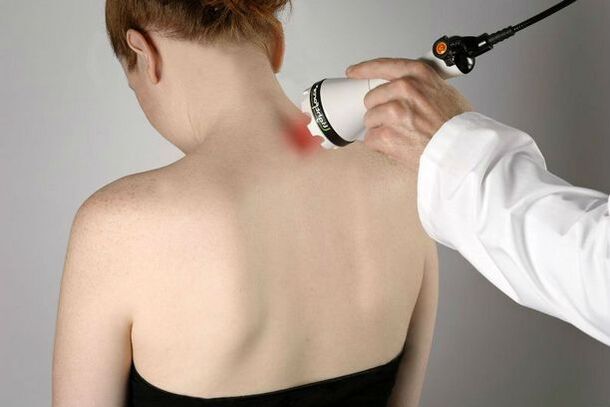
Drug treatment
Pharmacological drugs are used to eliminate the symptoms of cervical spondylosis, including improving blood circulation and partially regenerating the intervertebral disc.Due to the absence of characteristic signs in the early stages, patients turn to a spine specialist or neurologist with pathology of severity 2 and even 3 degrees.Often they have developed complications - intervertebral hernia, protrusion, vertebral artery syndrome.Therefore, doctors include in the treatment regimen not only pain relievers but also the ability to improve nerve preservation, skeletal muscle relaxation and nutritional recovery.
NSAIDs
With osteochondrosis in 2-3 radiographic stages, patients complain of sharp pain, which occurs when tilting or turning the head.In such cases, they are prescribed non-steroidal anti-inflammatory drugs.For severe pain, perform intramuscular injections of solutions - Diclofenac, Meloxicam, Lornoxicam, Ketorolac.The drug not only has pain relief effects but also has anti-inflammatory and anti-edema effects.This is especially true when the soft tissues in the neck are damaged by displaced discs or bone spurs.
If the pain is not too intense and occurs occasionally, it is recommended to use NSAIDs in tablet or capsule form:
- Nimesulide;
- Ketorolac;
- Diclofenac;
- Celecoxib;
- Etoricoxib.
Systemic NSAIDs are quite toxic to the stomach because they stimulate increased hydrochloric acid production.To exclude the possibility of mucosal damage, proton pump inhibitors should be administered together with NSAIDs.
Ointments and gels are used to eliminate mild pain that bothers the patient during weather changes or hypothermia.Usually, the treatment regimen includes Diclofenac, Ketoprofen, Artrosilene, Piroxicam, Ibuprofen.
hormones
Even if intramuscular injection of NSAIDs does not have an adequate analgesic effect, hormonal drugs will be used - Methylprednisolone, Triamcinolone, Betamethasone, Dexamethasone.Glucocorticosteroids are characterized by pronounced analgesic, anti-inflammatory and anti-exudative activity.Hormonal drugs are often used for drug blockade in combination with the anesthetics Lidocaine and Procaine.This method of taking the drug ensures maintenance of the analgesic effect for several days and sometimes weeks.
But glucocorticosteroids are not designed for regular use.They are toxic to internal organs and damage cartilage, bones and ligamentous apparatus.Hormonal drugs also have immunosuppressive effects, negatively affecting the immune system.
Anesthesia
The anesthetics Lidocaine and Novocaine (Procaine) are most commonly used in the treatment of cervical spondylosis due to drug blockade.The latter is characterized by a pronounced analgesic effect and a wide range of applications.Novocaine in the treatment of degenerative-dystrophic pathologies is prescribed to block peripheral nerves and nerve ganglia.It is the violation of the spinal roots by bone spurs or herniated protrusion that causes acute pain.
Lidocaine is not only used for blockade.This is one of the active ingredients of Tolperisone injection solution, a muscle relaxant that helps eliminate muscle spasms.Lidocaine is also included in preparations containing B vitamins.
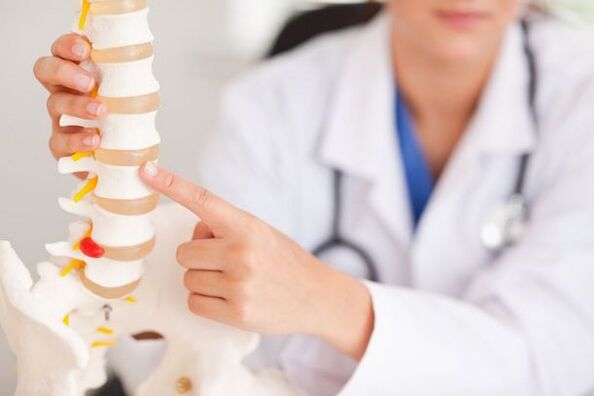
Local irritant
Ointments, gels, balms with a warming and local irritating effect are often prescribed to treat cervical spondylosis, but only if there is no soft tissue inflammation.They may contain camphor, menthol, turpentine, red pepper extract, nicoboxil, nonivamide, snake or bee venom.These components stimulate sensitive nerve endings located in the subcutaneous tissue, helping to eliminate pain.
Such agents have a vasodilating effect, accompanied by a prolonged and intense feeling of warmth.And by improving the blood supply to tissues with nutrients, their recovery process will be accelerated.
Topical irritants are often prescribed to patients to reduce the dose of systemic analgesics and reduce the pharmacological load on the body.
The drug improves blood microcirculation
Means that improve blood circulation are used in the treatment of osteoarthritis in any location.But especially for cervical pathology, they are often in higher demand.In this part of the spine, compression of the arteries that supply nutrients and oxygen to the brain often occurs.The following medications help restore blood supply:
- Xanthinol nicotine, which helps improve microcirculation, oxygenation, nutrition of cartilage tissue and all parts of the brain;
- Pentoxifylline, reduces blood viscosity and aggregation of platelets and erythrocytes, improves blood rheological properties (fluidity);
- Aminophylline, reduces tension in the vascular walls and promotes dilation of peripheral vessels.
Preparations containing thioctic acid are often used to improve microcirculation.They have a vasodilating effect, restore the function of spinal roots, improve nutrition and conservation.
Vitamin
To improve a person's health, strengthen the body's defenses and replenish reserves of substances necessary for tissue regeneration, patients are prescribed balanced complexes of vitamins and trace elements.Just taking one pill of any medicine per day is enough to eliminate the resulting deficiency.
But drugs with vitamin B are more often used in the treatment of cervical spondylosis.The composition of the injection solution, in addition to pyridoxine, thiamine, cyanocobalamin, also includes the anesthetic Lidocaine.Vitamin B tablets may also be prescribed.The use of their course helps to improve the transmission of nerve impulses and stimulate natural mechanisms aimed at recovery.
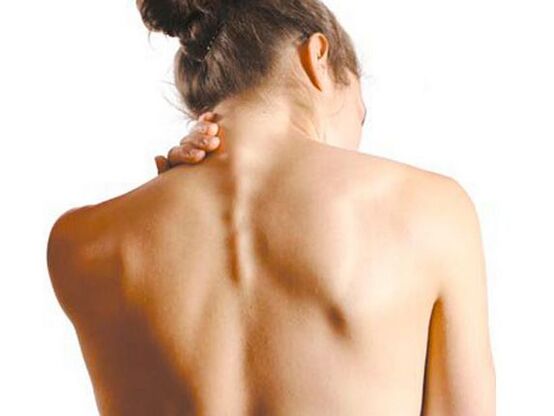
Chondroprotectors
This is the only group of drugs used to treat cervical spondylosis.At the early stages of pathology development, chondroprotectants are used to partially restore the intervertebral disc.This effect is due to the ability of chondroitin and glucosamine to stimulate proteoglycan synthesis, increase the production of hyaluronic acid, activate all functions of cartilage cells (chondrocytes) and prevent their premature destruction.
Chondroprotective drugs are also prescribed for patients with grade 2 and 3 cartilage degeneration. At this stage, cartilage tissue is no longer able to regenerate.But taking the drug in doses up to 800 mg will prevent further degenerative and destructive changes.The duration of the therapy course is from 3 months.After using the products for 2 weeks, their pronounced anti-inflammatory and analgesic effect appears.
The active ingredients of the drug have cartilage-protecting activity for the treatment of cervical spondylosis:
- Glucosamine sulfate or hydrochloride;
- Chondroitin sulfate;
- Glucosamine and chondroitin;
- Ingredients of plant or animal origin.
Surgical intervention
Indications for surgical intervention include the ineffectiveness of conservative treatment, as well as complications of cervical spondylosis, for example, discogenic myelopathy, vertebral artery syndrome and nerve root syndrome.To decompress the spinal cord, blood vessels and spinal roots, the following manipulations are performed:
- surgical excision;
- laminectomy;
- ostomy surgery;
- facetectomy;
- discectomy.
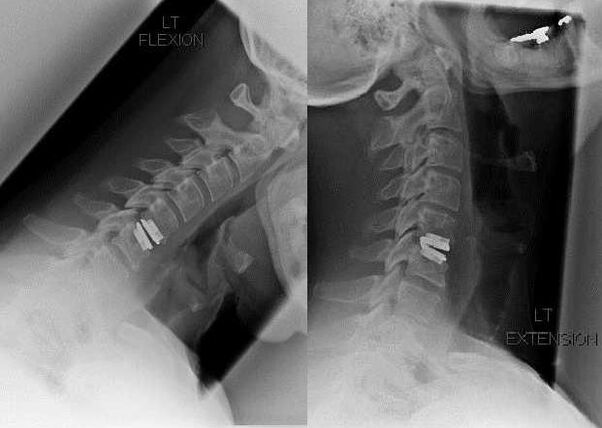
During surgery, pieces of bone and ligaments may be removed, and the disc may be completely or partially removed.For small hernias, laser vaporization of the nucleus pulposus is often performed.
After resection of vertebral structures, stabilization of the spinal motion segments is often required by spinal fusion or installation of autologous bone and skin grafts.
Massage and self-massage
There are many types of methods of this treatment, but for cervical spondylosis, classical methods, acupressure, vacuum (including hardware) and segmental massage are more often used.Mechanical impact on the back of the neck, shoulders, forearms and back allows you to stimulate lymphatic drainage, eliminate venous congestion, strengthen muscles and relax skeletal muscles.Massage is used not only to treat the disease but also to prevent recurrence.
You can self-massage by rubbing, stroking, and squeezing the back of your neck for 10-15 minutes.But it is better to buy special electrical devices in a pharmacy or medical equipment store - massagers equipped with a comfortable long handle and a speed controller.
Complex therapeutic exercise
The physiotherapist selects individual exercises for the patient, taking into account the severity of the pathology and the complications that have developed.One of the criteria is the frequency of neurological manifestations.Usually the complex includes the following exercises:
- Clasp your fingers and place your palm on your forehead.Press your hands on your head, trying to tilt your head back, creating resistance due to tension in the neck muscles;
- Clench your fingers and place your palms behind your head.Press on it with your hand, as if trying to tilt your head down.At the same time, tense your neck and shoulder muscles, trying to maintain the original head position;
- Place your palm on your cheek.Try to tilt your head to your shoulder, using your hands to resist.Repeat the exercise on the other side.
Regular exercise therapy is the most effective way to eliminate the symptoms of cervical spondylosis and prevent its spread to healthy vertebral structures.Daily exercise stimulates the strengthening of the muscle corset, which helps stabilize the intervertebral discs and vertebrae.And by improving blood circulation in tissues, nutrient reserves will be replenished.
Manual therapy
Orthopedists always prepare patients for upcoming operations, starting the session with a relaxing massage.Then, with rhythmic movements, he stretches the muscles and removes their excessive tension.As a result, muscle spasms disappear, causing more pain when the spinal roots are compressed.The compression of the vertebral artery is eliminated and with it the neurological symptoms.The chiropractor will adjust the cervical vertebrae if necessary.This may be accompanied by crunching, clicking, clicking sounds and increasing severity of pain.
One way to avoid surgery is to stretch (pull) the spine to increase the distance between the vertebral body and the damaged discs.The procedure is performed on special tables by orthopedists.But the most common is underwater traction in the bathtub or pool.
Acupuncture
This is one of the types of acupressure recommended for patients to restore mobility of cervical vertebrae structures and improve blood circulation.During the session, very thin needles of different lengths made of steel, silver and gold are used.They are installed at biologically active points not only on the back of the neck, but also on the back, shoulders and forearms.
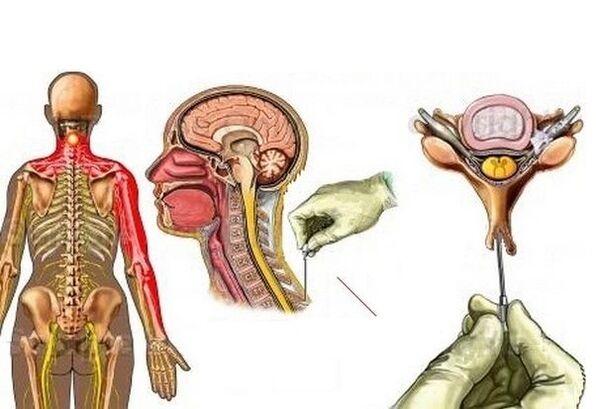
Once the needle is inserted, weak pain impulses begin to travel into the central nervous system.The body's response is to release biologically active substances that have analgesic and anti-inflammatory effects into the circulatory system.The production of endorphins increases, significantly improving the patient's health.
Orthopedic treatment methods
From the first days of treatment, the patient should wear an orthopedic device - Shants Necklace.They need to be worn for several hours and must be removed before bed or during the day.Collars can be elastic, plastic or metal, rigid or inflatable.Devices vary in height, level of fixation, and fastener design.The size of the collar for the patient is determined only by the vertebrologist, who takes into account the severity of the symptoms of osteoarthritis and the possibility of displacement of the vertebral structures.
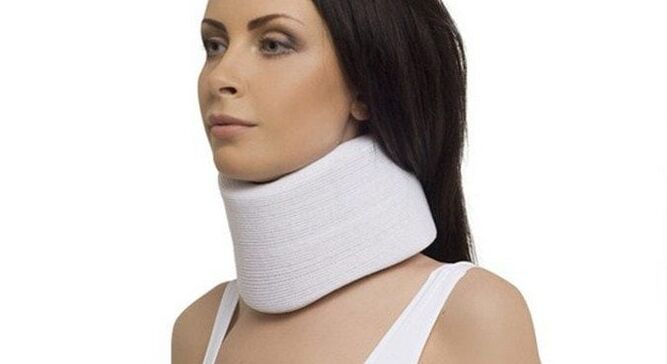
Patients should purchase an orthopedic mattress of medium firmness.When lying on it, blood circulation of bones, cartilage and soft tissues is not impaired.Doctors also recommend sleeping on an orthopedic pillow with a special concave for the head.
Folk remedies and recipes
After basic treatment and elimination of all symptoms, folk remedies are used.The feasibility and safety of home use should be discussed with your doctor.
Honey ointment
Put a spoonful of aloe vera juice and lanolin in a mortar and blend until a homogeneous mass is formed.Add a teaspoon of turpentine, a drop of eucalyptus, pine, rosemary essential oils, 30 g of condensed flower honey, stir well.Without stopping rubbing, divide 100 g of medical Vaseline into small portions.Ointment is rubbed into the skin of the neck when there is discomfort.
Horseradish leaves
A large fresh horseradish leaf is thoroughly kneaded, spread with a layer of thick honey and applied to the back of the neck.Secure the compress with plastic wrap, a warm cloth, and a bandage.The duration of the procedure is 1-2 hours.
Other herbal compresses
In a mortar, fresh banana leaves, dandelion, burdock, cinquefoil and elecampane are ground into a thick paste.Without stopping stirring, add a few drops of juniper and thyme essential oils, a spoonful of almond cosmetic oil.Apply this mass to the back of the neck, secure the compress with film and medical tape and leave for an hour.
Ways to prevent disease
Osteonecrosis is a relapsing degenerative pathology that occurs against the background of progressive destruction of intervertebral discs and bone deformation.It is necessary to exclude from the usual lifestyle factors that can cause nutritional deterioration of cartilage tissue.These are low physical activity, overweight, excessive physical activity and lack of dietary foods rich in trace elements and vitamins.
























